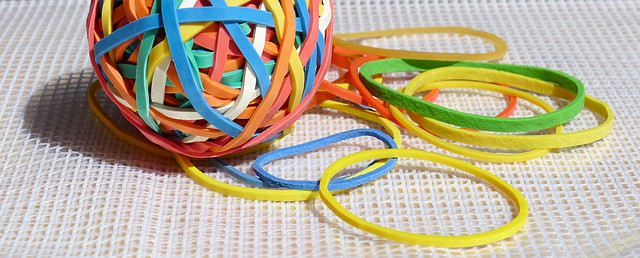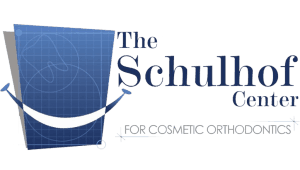What you need to know about elastic bands. Having a beautiful and healthy smile is one of the things that highlight the face and adds depth of character to your over all look. A beautiful set of pearly whites is something every person appreciates. More importantly, utmost care must be given to teeth because once permanent teeth are damaged; you can no longer re-growing a new one. Unfortunately, if you have crooked teeth, it takes away from your charm because misaligned teeth are unsightly to look at. Your attractiveness quotient in part rests on your sparkly teeth. Seeking help from an expert orthodontist is essential if your teeth are crooked so they can be fixed.
The Magic of Braces
An expert orthodontist like Dr. Adam Schulhof of The Schulhof Center with clinics in New Jersey and New York, says that braces are the traditional and oldest method of aligning teeth. Braces are comprised of metal parts like archwires and metal brackets designed to help move the teeth so they can fit together properly in your mouth. These metal brackets are used in conjunction with elastic bands to close in the gaps, improve over bites, fix under bites, and repair midlines.
Dr. Schulholf explained they may look like simple rubber bands, but these tiny elastic bands for braces have a tough job. They are painstakingly attached to little hooks that are a part of the metal brackets. And they need to be constantly readjusted so the patient must cooperate with the dentist’s instructions to appreciate the full benefits of the treatment.
Ligatures
The most common type of rubber bands are those colorful one wrapped around each bracket and they are called ligature. Their purpose and function aren’t just to make your mouth colorful. They are more than decorative because they are primarily put in your mouth to hold the metal archwire in place. These ligatures are placed by your dentist and they stay there until you see him again for adjustments when your archwire is tightened. They are used as an anchor to keep the post on the actual brace in place. If you get bored of the color, you can ask your orthodontist to change them for you on your next visit.
These types of elastics are used 24 hours a day to let the braces do their job at a much faster rate. These bands put a considerable amount of pressure on your jaw as they slowly move the teeth to gradually place them in a more aesthetically pleasing position. When they are used at the peak of correcting your problem, you may feel a slight discomfort. But please do not mess with how the bands have been placed by your dentist. Because you can impede and delay the progress.
There’s More…
Interarch Elastics
There are another set of bands that don’t have to be used all the time. They can be placed at night and can be removed and replaced as needed. These are typically differentiated and classified by the problems that they correct on your jaw. This common type of rubber band for braces is called interarch elastics. The function of this is to correct your bite and adjust your jaw. Note that that not all braces wearers need this kind of rubber band. The need for this is dependent on the alignment of the jaw.
Since their task is to correct the bite and fix the jaw properly, these bands are hooked to different parts depending on what needs to be addressed. You connect them to the brackets, usually by connecting a top tooth bracket with a bottom tooth bracket. This connection will help adjust the position of your jaw and the position of your teeth inside your mouth so that the teeth line up correctly.
These have various functions such as:
- Class II elastics are hooked onto the brackets in a certain way to correct a malocclusion or also known as an overbite. They are hooked on the canines at the top and stretch down to the lower molars to help pull the jaw so they do not protrude.
- Class III elastics are placed with the emphasis on pulling the lower portion as it strives to correct an under bite. The bands are placed near the front teeth on the lower portion then stretch at ang angle hooked back on the upper molar with the goal of pulling the jaw back so the chin doesn’t jut out.
- Vertical elastics slowly work on moving the teeth to keep them together.
- Front cross elastics are placed at a certain angle for the correction of the midline.
Your orthodontist will explain how to use this if you need them because these need daily replacement as they get a lot of wear and tear. Don’t worry because Dr. Schulhof explained that you will be taught how to take them on and off. You have to take them off when you eat. Also, you need to remove them when you are brushing your teeth and cleaning your brackets. You have to pay attention to your doctor so you can put them back on and off properly and at the right spot where you are supposed to keep them anchored.
Other Elastic Bands
There is what is called a triangle elastics formation that keep a few teeth anchored in placed. The bands make a triangle formation for specific teeth only. They don’t let your jaw open so much, so be sure to ask your orthodontist for guidance and advice. Another type is called chain elastics which work on pulling a group of your teeth together. These are placed on either the top part only or the bottom part and rarely do they intermingle and crossover.
Contact us Today for a FREE Consultation
Dr. Schulhof also emphasized that not all types of braces need ligatures nor elastic bands. Some type of braces use a different technology such as the Incognito that he specializes on. As the name implies, incognito means it cannot be recognized or see. This type of braces is hidden or invisible. And this system is fully customizable depending on the needs of the patient. Invisalign is another treatment, this uses plastic aligners to getnly reset your teeth. He reminds everyone that a relationship with an orthodontist is one that is built on trust. You can ask him as much questions as you like and advice regarding the treatment plan he has crafted for you. In the same token, you also have to work and cooperate with him to get the results you desire.
Like what you read? Comment below or CLICK on an APP LOGO to follow us and share the conversation.
Brace Yourself (What you Need to Know About Elastic Bands)



